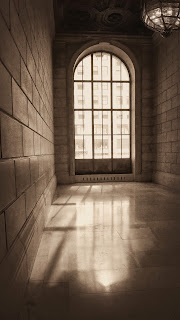In preparing for a trip to India, I'm emptying my small Epson Multimedia Storage Viewer of the photographs I took on my last overseas journey. That was in 2014 when I ventured to Germany. I don't recommend storing images in a device for years; however, I backed up the Germany images shortly after returning home. I just hated to delete them right away because I had such a wonderful time. And so the jpegs and raw images remained in the Viewer all this time. And now, looking at the pictures I took many months ago, I am once again captivated by the sights I saw in Berlin, Potsdam, Munich, Ulm, Dersden and the other cities where I stayed. The medium of photography allows us to vividly revisit the past with an immediacy that is breathtaking. Each image I see on the screen perfectly captures the time, colors, scenery, people and essential perception of a past encounter. Whether I snapped the shutter yesterday or years ago, for me the moment comes back fresh and intact.
Another way to
keep time in a bottle is by using the app Instagram. I have a good deal of pleasure in taking photos with my iphone and posting on Instagram, Twitter and Facebook. It is a quick and fun way to share what I observe and that which attracts me. Instagram provides an opportunity to instantly relate to other photography lovers and the give and take is not only enjoyable but a learning mechanism. Right away, I am critiqued by others and in turn I can see great shots continuously. Always fascinated by the immediacy of photography, I realize that technology has created a new time frame that will continue to speed up as new apps, like Instagram, evolve.
Having deleted all of my Germany files from my Viewer, I look forward to filling the Viewer with new images of India. But the two need not be mutually exclusive. The fresh look of the images I took a couple of years ago appeal to me in the same way they did when I was right there. Recently, using Instagram has encouraged me to look for pattern in my images more than ever before. Thus another positive aspect of using the app. To that end, when I came across this interior photograph, I was taken with the patterns and the darks and lights. Abstracting photography into shapes, patterns and darks and lights is a wonderful way to visualize architecture. Instagram, with its lightening speed, is a remarkable tool for abstracting areas of buildings. Using the app has made me even more aware of the individual parts of an image. This one was taken with a Canon Mark II, but lends itself to my recent design inclinations. And, through the photography medium, the image transports me right back to Berlin! Instantly!

Sepia Architectural Photography
To learn more visit:
https://www.moma.org/momaorg/shared/pdfs/docs/press_archives/1513/releases/MOMA_1951_0031_1951-04-25_510425-24.pdf
http://art.buffalo.edu/coursenotes/art314/words.pdf






















